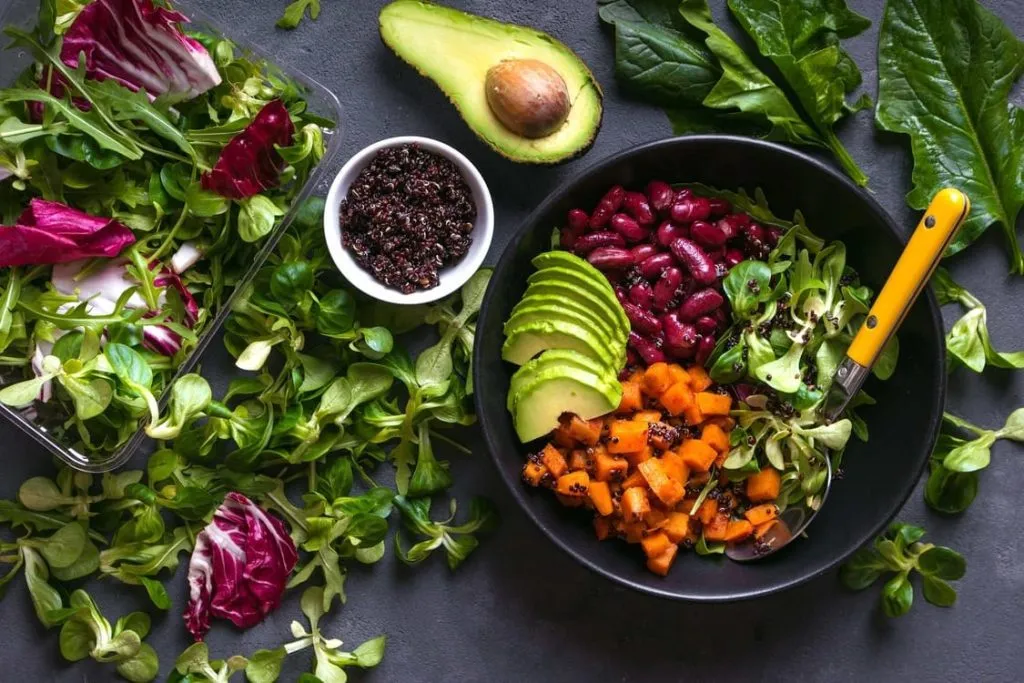Slovenia has a tasty variety of traditional vegetarian food – make sure not to miss the delicious dumplings called “štruklji”
Slovenian traditional cuisine is rich in the meat and meat dishes. But still, there are several vegetarian options that will leave both your stomach and taste buds highly satisfied. The most common traditional Slovenian vegetarian dishes are buckwheat porridge, filled pasta from Idrija similar to ravioli and štruklji. Besides those there is also a vegetarian take on some other traditional dishes, which are usually prepared with meat, but the vegetarian versions are getting more and more popular. You can taste a lot of those vegetarian specialties joining the Food Tour in Ljubljana.
Mushroom soup to die for
The most traditional soup in Slovenia is beef soup, which is still almost always on the menu for a Sunday family lunch. But the silver medal goes to the vegetarian most tasty one: a mushroom soup. A lot of Slovenians love to hunt for mushrooms on their walks in a forest, so it is not a surprise, that there are many different recipes about how to make the best mushroom soup. Also when made in restaurants it is commonly believed that the best taste comes from a variety of different wild mushrooms, but porcini or cep mushroom is mandatory to get the rich flavor. The soup is creamy, often served with a scoop of fresh sour cream and bread. Definitely a dish not to be missed in Slovenia, even if you are not a vegetarian.
Traditional stews turning vegetarian
There are also sour cabbage and sour turnip stews which are in Slovenia known as a unique dish and are most common winter dishes. Sour cabbage or sauerkraut is Slovenian local super food, gaining back its traditional popularity with younger generations’ healthy food awareness and highly recommended fermented food.
Traditionally the hearty soup called jota is usually prepared smoked meat or sausage, but lately its vegetarian versions are getting more and more popular. The same transformation is happening to the traditional barley stew called ričet, which can be prepared also without meat. Vegetarian ričet is full of flavors and very saturated – the best one is the one consumed in a mountain hut after a long hike or skiing day.
Take the sausage away – and enjoy the tradition in a vegetarian way
The most typical winter main dish in Slovenia is probably a sausage with sour cabbage and buckwheat porridge which can be compared to polenta. Take the sausage away and you get a healthy vegetarian meal from fresh local ingredients. A well known secret says the dish gets better every time you reheat it.
Sour turnip is traditionally served with blood sausage and mashed potatoes. Again, take the sausage away and enjoy in creamy potatoes with slightly sour turnip on the side – for many Slovenians it is an instant throwback to their childhood, when grandmas made the Sunday lunch after playing outside. A proper comfort food!
In the summer you have to try polenta in a different combination – with sour milk! It is a traditional shepherd’s lunch and the best location to try the vegetarian dish are Slovenian mountains.
Idrijski žlikrofi – the dish with its own festival
Filled pasta from Idrija similar to ravioli or as the Slovenians call it – idrijski žlikrofi is a type of pasta filled with spiced filling made of cooked potato, sautéed onions and lard. In Idrija, they have undoubtedly been made for at least 150 years. Where their shape comes from it is not certain, some say it tries to resemble the Napoleon’s hat, others that it comes from the Alpine region. They are served with a sauce, for a vegetarian version the best option is with porcini mushrooms.
There is also The Idrija Žlikrof Festival, an outstanding culinary experience, where this traditional Idrija dish is presented in a contemporary light. Each year in August the certified Idrija žlikrofi makers and local chefs, who make innovative sauces accompanied with high-quality wineries and microbreweries to make the festival a great socializing and tasting event.
Štruklji dumplings with their own restaurant
Rolled dough with a variety of fillings. How good does that sound? Štruklji is a dish not to be missed when you visit Slovenia. Whether you like the sweet or the savoury version, your greatest dilemma will be, which filling to choose.
The dish comes in the form of rolls, and can be either cooked or baked, the most common fillings are cottage cheese, walnut, apple, poppy seed or tarragon. They are served with either meat and gravy as a side dish or with breadcrumbs for a topping as a dessert.
You can get štruklji in all restaurants that offer Slovenian cuisine and the dish is so popular it also has its own “štruklji only” restaurant in Ljubljana: The dumpling house Moji štruklji Slovenije, where You can choose from more than 20 kinds of traditional and modern Slovenian dumplings, made from different kinds of dough, with creamy or classical fillings and toppings.
Sweeten your day in Bled with cream cake dessert
A cream cake is a specialty of the Slovenian Lake Bled area. The layered cake has it all: a golden, crispy, buttery pastry as the base, topped with vanilla custard, followed by whipped cream, and a layer of thin, buttery dough, topped with icing sugar. It is served in cubes and sold in up to 3.500 slices per day. The recipe for the original cream cake or kremšnita is a complicated one, making the dessert a true piece of art.
Potica and Prekmurska gibanica
Potica is commonly known as every Slovenian housewife’s source of pride. The traditional cake is usually prepared for festivities and celebrations such as Christmas and Easter. Today, you can get it anytime in restaurants and supermarkets, but homemade potica is still the best. There are around 60 types of potica, with various, traditional fillings, most commonly with walnuts, hazelnuts, tarragon, honey, poppy seeds, and cottage cheese, but also with almonds or chocolate. The dessert is such an important part of Slovenian cuisine and culture, that it was even featured on Slovenian postage stamp.
Prekmurska gibanica is also a well-known dessert, traditionally a dish of Prekmurje region, where recipes have often been inspired by Hungarian and Austrian traditions. A layered strudel pie is an interesting combination of different fillings and paper-thin strudel pastry. What makes the dessert different from the others is the bottom layer, often made with shortcrust pastry.The fillings are divided by butter-brushed pastry sheets and layered in the exact order of poppy seeds, cottage cheese, ground walnuts, and grated apples. The layering is done twice, finished with another sheet of pastry. A dessert that can easily be eaten as the main meal.














